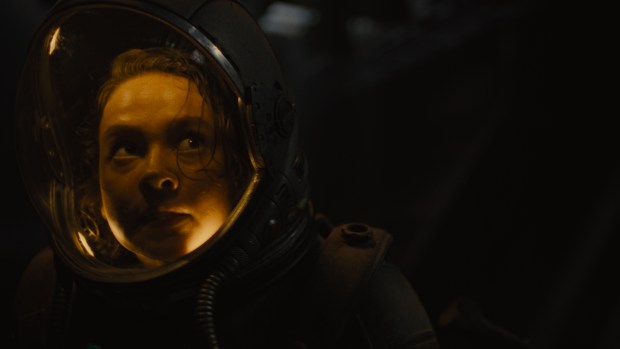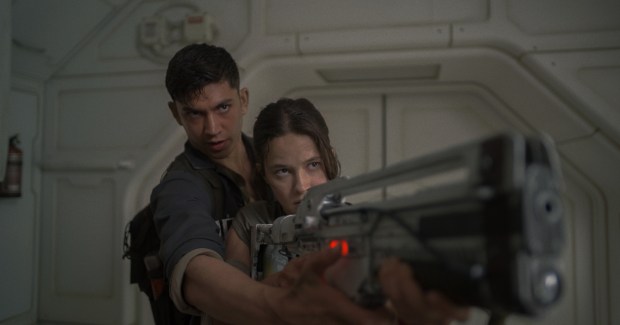There are those who don’t like any of the “Alien” films after the first two, instructively different ones: Ridley Scott’s “Alien” (1979) and James Cameron’s “Aliens” (1986).
And there are others who appreciate all six official franchise outings, up through “Alien: Covenant” (2017), on their own terms. I’m in the second camp. And the new one, “Alien: Romulus,” keeps me there.
The movie knows what it’s doing. It’s sharply paced, dynamically varied filmmaking with dash and purpose, along with scads of blech and viscera. At times, you wonder if the Chestburster Xenomorph that exited John Hurt’s chest in “Alien” (brilliantly staged scene, still) directed parts of it. But this is where a sharp editor, working with a director, can take the edge off. Jake Roberts, Oscar winner for “Hell or High Water,” does just that in “Alien: Romulus,” establishing and then shaking up the scenes’ rhythms so that we never quite know what’s coming, or when.
Director Fede Alvarez co-wrote the script with his screenwriting partner Rodo Sayagues. “Alien: Romulus” is an interquel, a sub-category of “midquel,” taking place between the events of “Alien” and “Aliens” sometime around 2150. On a sunless star, the Weyland-Yutani Corporation’s mining colony is making indentured slaves out of its workers. The narrative perspective and chief rooting interest belong to one of those miners, Rain Carradine, and while the character (and the movie) doesn’t sit around talking much, Cailee Spaeny’s excellent. Recently seen in “Priscilla” and “Civil War,” she scales every emotion and detail astutely, so that a reaction shot to something horrible feels, well, real, and not simply rote.
An orphan, Rain lives and works in the protection of a “synthetic,” Andy, played by David Jonsson (so good in “Rye Lane”). Her latest work break denied, Rain reluctantly joins her colleagues in a temporary escape plan. It involves breaking into an abandoned space station floating above their own grubby star, stripping it for parts — and using them for an unauthorized getaway. On board, though, trouble: many, many tiny gestating xenomorphs, waiting for their cue.
What happens next? Hell, breaking loose and going for the face, that’s what. Tentacles, right in the eyeball. The reappearance of a character from, oh, let’s just say, the first film. Aboard this misbegotten scavenging mission, the characters may be more functional than dimensional, but they’re an interesting clash of temperaments and personalities. Archie Renaux and Isabela Merced play brother and sister, the latter dealing with a personal health matter that director Alvarez and his tiptop design team could not wait to exploit in the ookiest ways possible.

This brings us to why “Alien: Romulus” works, and how. It’s set in space, of course, so the digital effects work is extensive and expected. But the movie’s heart belongs to an earlier, first-“Alien” era of practical effects somebody made, often complemented by production designs somebody built. Shooting the whole thing in sequence, with an unfashionable and gratifying devotion to building a world both familiar from earlier “Alien” movies but distinctive, director Alvarez has his filmmaking priorities in order.
The movie doesn’t quite stick the landing, piling on while lingering at the gate for an extra 10 minutes or so. The gore level may not be a shock to fans of Alvarez’s previous features, but for the casual franchise fan, well, it’s gory. But the best of “Alien: Romulus” reminds us that some franchises are more open to a variety of directorial approaches than others. In the context of the recycled materials we’ve had this summer, from “Bad Boys: Ride or Die” to “Deadpool & Wolverine,” this one’s near the top.
“Alien: Romulus” — 3 stars (out of 4)
MPA rating: R (for bloody violent content and language)
Running time: 1:59
How to watch: Premieres in theaters Aug. 15
Phillips is a Tribune critic.



